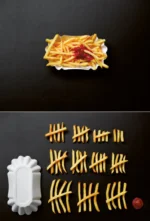Edge Types
Chapters > Algorithm
The ever first step of the algorithm is to classify the incoming edge. There are only four types of edges;
Forward-Edge
If the tail of an edge is connected to the head of it. The algorithm ignores the edge.
Tree-Edge
If the tail, the head, or both are unknown nodes. They are processed as required.
Cross-Edge
If the tail of the edge is not connected to the head of it. The algorithm processes the edge, after making the necessary adjustments to the graph's representation if it is redundant.
Back-Edge
If the head of an edge is connected to its tail. The head node H is literally substituted with node @H, which is its proxy. Thereafter, the processing resumes the classification process with the replaced node.
Because the topology of the graph is known to the algorithm at any time, the connectedness of any two nodes can be decided in constant, or nearly constant time.
The edge types does not depend on the representation of the graph being node-oriented or edge-oriented.

